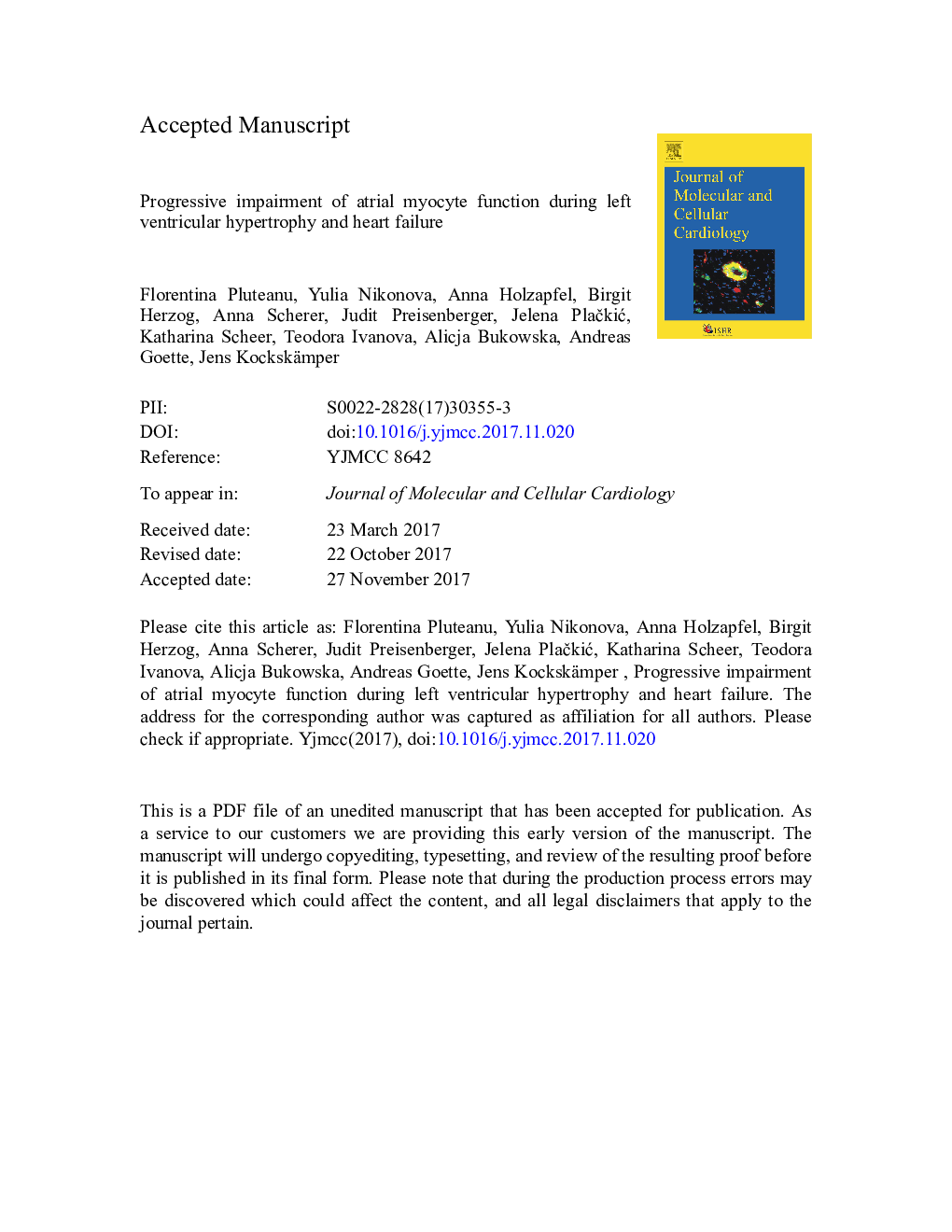| Article ID | Journal | Published Year | Pages | File Type |
|---|---|---|---|---|
| 8473632 | Journal of Molecular and Cellular Cardiology | 2018 | 26 Pages |
Abstract
Hypertensive heart disease (HHD) can cause left ventricular (LV) hypertrophy and heart failure (HF). It is unclear, though, which factors may contribute to the transition from compensated LV hypertrophy to HF in HHD. We hypothesized that maladaptive atrial remodeling with impaired atrial myocyte function would occur in advanced HHD and may be associated with the emergence of HF. Experiments were performed on atrial myocytes and tissue from old (15-25Â months) normotensive Wistar-Kyoto rats (WKY) and spontaneously hypertensive rats (SHR) with advanced HHD. Based on the absence or presence of elevated lung weight, a sign of lung congestion and heart failure, SHR were divided into a non-failing (SHR-NF) and failing (SHR-HF) group. Compared with WKY, SHR exhibited elevated blood pressure, LV hypertrophy and left atrial (LA) hypertrophy with increased LA expression of markers of hypertrophy and fibrosis. SHR-HF were distinguished from SHR-NF by aggravated hypertrophy and fibrosis. SHR-HF atrial myocytes exhibited reduced contractility and impaired SR Ca2+ handling. Moreover, in SHR the expression and phosphorylation of SR Ca2+-regulating proteins (SERCA2a, calsequestrin, RyR2 and phospholamban) showed negative correlation with increasing lung weight. Increasing stimulation frequency (1-2-4Â Hz) of atrial myocytes caused a progressive increase in arrhythmogenic Ca2+ release (including alternans), which was observed most frequently in SHR-HF. Thus, in old SHR with advanced HHD there is profound structural and functional atrial remodeling. The occurrence of HF in SHR is associated with LA and RA hypertrophy, increased atrial fibrosis, impaired atrial myocyte contractility and SR Ca2+ handling and increased propensity for arrhythmogenic Ca2+ release. Therefore, functional remodeling intrinsic to atrial myocytes may contribute to the transition from compensated LV hypertrophy to HF in advanced HHD and an increased propensity of atrial arrhythmias in HF.
Keywords
Related Topics
Life Sciences
Biochemistry, Genetics and Molecular Biology
Cell Biology
Authors
Florentina Pluteanu, Yulia Nikonova, Anna Holzapfel, Birgit Herzog, Anna Scherer, Judit Preisenberger, Jelena PlaÄkiÄ, Katharina Scheer, Teodora Ivanova, Alicja Bukowska, Andreas Goette, Jens Kockskämper,
